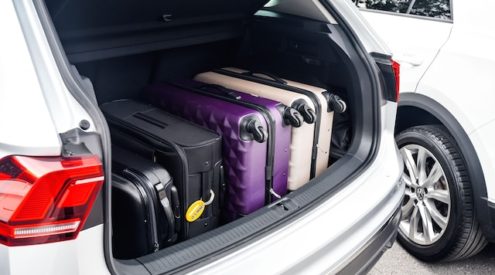Going up?
Upgrading your 4×4 suspension undoubtedly improves off-road performance, but is it worth springing a lot of cash for?
Why upgrade?
There are two main reasons to upgrade your 4×4’s stock suspension: to increase load capacity and improve off-road ability.
Higher load capacity
Overlanders tend to ‘overload’ vehicles with extra fuel, water, tools and camping gear. As a vehicle’s suspension wears, the rear end begins to sag under the added weight, impacting handling and ground/obstacle clearance – also known as a vehicle’s departure angle – at the rear.
Better off-road ability
Installing a suspension-lift kit will improve a vehicle’s off-road ability by optimising approach, departure and break-over angles – now your vehicle can take on steeper obstacles without snagging. Also, the increased wheel travel improves articulation (the ability to keep all wheels in contact with the ground over rough terrain).
The clearance myth
It’s important to note that raising suspension by fitting a lift kit won’t improve undercarriage clearance i.e. the space between the lowest point of the undercarriage (differential) and the road surface.
The best way to improve clearance is to fit higher-profile tyres. A lift kit will accommodate bigger tyres because the space between the wheel hub and the mudguard is increased.
NoTE: Changing stock tyre profiles affects the vehicle’s gearing and so has implications to vehicle torque, fuel consumption and speedometer accuracy.
Go big, go for broke.
Installing very big lift kits will require further adjustments to the drive train to maintain its integrity. This is because raising the vehicle’s suspension changes the operating angles of the
prop-shafts in relation to the differentials. If it’s not addressed it can introduce vibration and wear, effectively shortening CV joints’ lifespan and long- term vehicle reliability.
Upgrade options
Load capacity and sagging issues can be addressed by fitting an extra leaf spring, or a taller or firmer coil spring, depending on the vehicle.
However, firmer suspension will deliver a harder, bumpier ride when the vehicle isn’t loaded. If you use the vehicle to commute, for instance, consider fitting softer springs and/or air-suspension.
Air-helper springs are avail- able in configurations for leaf- and coil-spring vehicles and can be pumped and deflated to compensate for the load.
While they’re a good middle- of-the-road compromise, air- suspension can compromise off-road articulation.
Trail drivers who don’t load very heavily usually fit a soft or intermediate setup to gain ride height without losing on- road comfort.
Before you upgrade
The challenge for any 4×4 enthusiast is to find a balance between on-road ride comfort and off-road articulation. Any fitment centre will happily tailor the suspension to your desire and application and a good fitter will advise you based on years of vehicle- and application- specific knowledge. However keep in mind lifting is expensive by anyone’s cheque book and eventually becomes an exercise in diminishing returns.
You may also be interested in these related articles:
Tyre sidewall text demystified
















